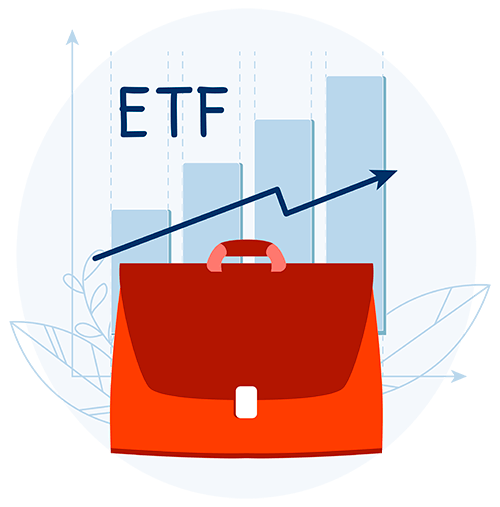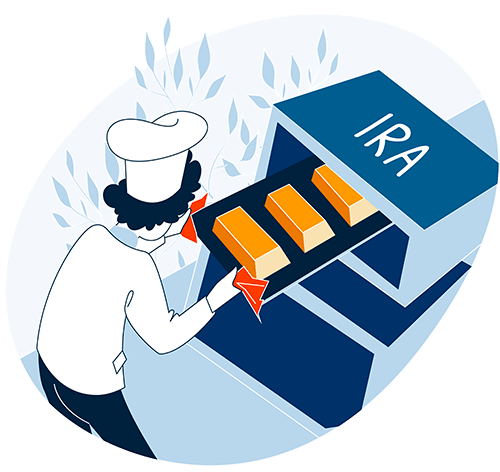
Volatility Explained: Why Does the Price of Gold Fluctuates?
One of gold’s biggest claims to fame is its ability to stay stable when other investment classes around it grow feverish in a lousy market scenario. Many investors seek refuge in the precious metal when the dollar value is down or uncertain, or the economy generally is not in a good state.

But that doesn’t imply gold prices do not move. If that were true, gold’s current value would have been the same a few decades ago. However, when gold prices go up and down, have you wondered why that happens? If you don’t know why, keep reading. In this write-up, we’ll discuss those aspects so that you have an idea about gold price fluctuations:
- The various factors affecting gold prices
- How gold did during the coronavirus
- Answers to a few essential questions and more
Like any other commodity, gold prices are driven by demand and supply. But what does that mean? Keep reading to find out.
Table of Contents
Factors Affecting Gold Prices
Before delving into the factors impacting gold price, let’s understand what volatility is. So, what is volatility?
Volatility measures how a particular commodity or asset’s prices move over a specific period. High volatility means greater price movements. Low volatility denotes marginal fluctuations.
Read more: What Happens to Gold When the Stock Market Crashes?
Gold prices fluctuate too, like any other commodity; and the following are the reasons:
Supply and Demand
Gold prices go up when less gold is mined or there’s more supply than demand in the market. The opposite is also true—i.e., if more gold is mined and there’s less demand. The opposite scenario, however, is rare.
The earth has a limited amount of gold. Since gold has been mined for centuries, the total gold available for mining has decreased. That has resulted in lesser gold with subsequent mining operations. The demand hasn’t gone down, causing the prices of gold to go up. Mining costs have increased since more effort and time are needed to dig deeper and trace the hard-to-access gold, adding to the price.
Gold Doesn’t Get Consumed
Unlike other commodities, such as coffee, gas, etc., gold doesn’t cease to exist upon consumption. It continues to live in the hands of people and institutions or countries not providing access to their gold reserves.
The easily accessible gold is in the custody of individuals and government institutions. When these parties hold on to their gold, gold demand and value go up. Gold falls if they release the yellow metal into the open market owing to a bustling economy.
Individual trading activities don’t affect prices as much as state-level initiatives do. For instance, if the government or central bank of a country decides to release some of its gold to the public owing to a strong economy and the precious metals’ inability to generate returns, the increased supply will cause the prices to come down.
And the time when the central bank decides to hold lesser gold coincides with a lack of interest in gold among the general public, the price of gold comes down further. Central banks, however, are aware of such possibilities and, therefore, refrain from indulging in activities that hurt market dynamics or dilute the value of gold people already hold.
Not to mention, offloading a lot of the gold held in the reserves could also negatively hurt the central bank’s portfolio. It, therefore, tries to hold on to the dead asset as much as possible.
Currency Valuation (Inflation)
When prices rise, gold spot prices go up. Central banks employ interest rates to control inflation, thereby shaping gold prices. Inflation devalues a currency or causes paper money to lose its buying power.
When currency value goes down, the value of gold goes up. And when there’s increased demand for the US dollar, its value goes up, and gold prices stabilize or fall—the former is likelier.
Why does gold value go up when the dollar falls? When the dollar dips, the precious yellow metal becomes less expensive to purchase with other currencies. The opposite is true when the dollar rises.
What affects currency value? A range of factors such as bank interest rates, political instability, government policies, etc., determine the demand and the subsequent value of a currency.
When a country exports more than it imports or has a trade surplus, the demand for its currency is high. The value, therefore, goes up. If it’s the opposite or there’s a trade deficit, currency demand decreases.
Also, when a country’s bank sets lower interest rates, the value of its money goes up because lower increase rates augment investment due to reduced borrowing costs. In simpler terms, buying a factory or a car on loan becomes cheaper, causing a spike in the demand and value of the currency. Financial information such as GDP, payroll, etc., influences paper money value too.
Geopolitical Crises
A geopolitical crisis is when people lose faith in paper currency and pivot toward gold, causing the latter’s price to shoot. The 1973 oil crisis, the 1970 Arab-Israel war (War of Attrition), the Soviet Union’s invasion of Afghanistan at the end of 1979, etc., are events that rattled the decade. No prizes for guessing—gold prices soared during or around each event.
Geopolitical crises push investors out of the equities and debt markets and toward precious metals and assets with inherent value. Gold is usually preferred because it’s more liquid than other assets and has myriad applications that deem it valuable. Silver is another metal that people invest in during a crisis but not as much as investing in gold.
Coronavirus and How It Affected Gold Prices

Coronavirus was an unexpected, unfortunate calamity that put the global economy into a coma. Businesses were affected, people lost their jobs, and industries had to be shut down.
But, true to its characteristic, gold shined bright. However, it was not as glittery for the yellow metal as the vast majority expected. The coronavirus pandemic was a large-scale medical emergency that caused several million deaths and upended various industries and their dynamics.
The coronavirus shut down or applied the brakes on several industries, including the gold mining sector. Mining companies couldn’t mine gold like usual due to the scarcity of workers. Travel restrictions prevented several mining firms and their employees from accessing mines in countries across the globe. Governments in Canada, Argentina, South Africa, Mexico, Peru, etc., ordered temporary closures of their mines.
The impact, however, wasn’t as significant on open mine operations as they don’t function in very confined spaces or do not require special plant and machinery or skilled personnel.
Little to no new gold was mined during the pandemic, causing the value of already available gold to go up. Gold prices went up 28 percent between January and August of 2020. According to the World Gold Council, the LBMA gold bullion price was $1,770/oz. in 2020. It was $1,393/oz. in 2019. The highest gold price in 2020 was $2,067/oz. The maximum cost of gold in the previous year was $1,546.10.
The above said, gold prices didn’t go up as much as some may have estimated. Priorities had changed, or people wanted more financial liquidity to tend to the medical expenses of theirs or their loved ones. Food supply and other essentials were priorities too. The primary focus was not to safeguard money for the future.
The bigger picture, however, clearly indicates gold rallied during the pandemic, upholding its image as the hedge against uncertainty.
Read more: What Affects Gold Prices
Conclusion
To conclude, different things affect gold prices. Although supply and demand are major determinants, many things happening outside of the gold market, such as the stock market or geopolitics, impact gold prices as well.
When people are paranoid or skittish about the value of their money or unsure about their country’s financial future, they steer toward gold so that their finances are not negatively impacted when the economy is in shambles.
Kindly note that gold is not a growth vehicle. It usually serves as a hedge against the economy. Investment pundits advise against putting more than 5 to 10 percent of your investment cash into gold.
To learn more about buying gold and how and when to sell the precious metal, click here. And if you’re looking for safe ways to invest in physical gold, look at gold IRA. We’ve discussed the topic in detail here.
FAQs
Why learn about gold price volatility?
Knowing what causes gold prices to go up and down could help your cause if you’re an investor or trade gold. You can benefit from the profit-making opportunities gold price volatility presents. And if you’re looking to invest in gold and remain put for long, knowing more about the price movement trends will help ascertain the most opportune time to buy gold.
Studying gold price volatility is akin to getting weather forecasts. If you know that tomorrow’s skies will be bright and clear, you can plan your day accordingly. Similarly, if you know what affects gold prices and those events are on the horizon, you can make your gold trading decisions wisely.
Does inflation cause gold prices to rise?
Contrary to general wisdom, inflation doesn’t necessarily have a direct relationship with gold. It’s more the fear of the people that determines prices. When investors flock to gold during economic uncertainty, gold rises. In technical speak, gold’s positive price elasticity causes its value to go up—when more people purchase gold, the precious metal’s price rises.
Since the price of gold is directly correlated with its demand, its costs can go up any time people buy the metal in hordes, irrespective of whether the inflation rises or the economy is strong. But the demand for gold doesn’t arise in a vacuum. There’s always an external factor pulling the strings, such as inflation or an economic collapse. That is why inflation, among other things, is considered a significant driver of gold prices.


